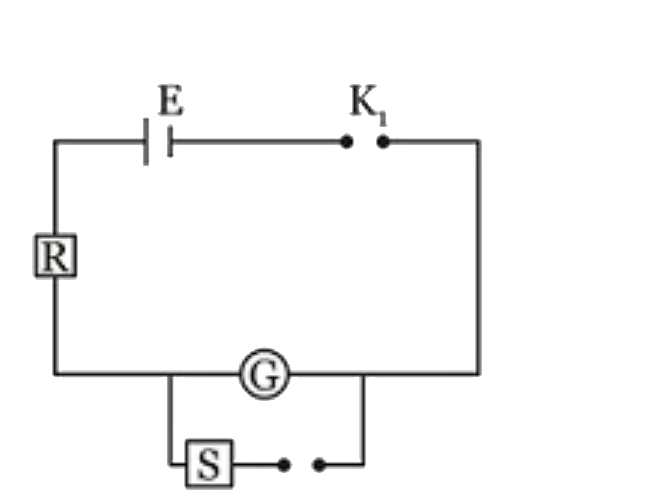In Kelvin's method of finding the resistance of a galvanometer, we
use the balance point method.
use the null point method.
use the half deflection method.
interchange the positions of the battery and the galvanometer.
Step by step video & image solution for In Kelvin's method of finding the resistance of a galvanometer, we by Physics experts to help you in doubts & scoring excellent marks in Class 12 exams.
Updated on:21/07/2023Topper's Solved these Questions
- CURRENT ELECTRICITY Book:TARGET PUBLICATIONChapter:CURRENT ELECTRICITY Exercise:Critical Thinking
Explore 24 Videos
- CURRENT ELECTRICITY Book:TARGET PUBLICATIONChapter:CURRENT ELECTRICITY Exercise:Competitive Thinking
Explore 48 Videos
- CIRCULAR MOTIONBook:TARGET PUBLICATIONChapter:CIRCULAR MOTIONExercise:EVALUATION TEST
Explore 11 Videos
- ELASTICITYBook:TARGET PUBLICATIONChapter:ELASTICITYExercise:Evaluation test
Explore 14 Videos
Similar Questions
Knowledge Check
Kelvin's method of determination of resistance of galvanometer by metre bridge is
Aequal deflection methodBnull deflection methodCequal distance methodDall of theseIn a circuit for finding the resistance of a galvanometer by half deflection method, a 6 V battery and a high resistance of 11 kΩ are used. The figure of merit of the galvanometer is 60 μA/division. In the absence of shunt resistance, the galvanometer produces a deflection of θ=9 divisions when current flows in the circuit. The value of the shunt resistance that can cause the deflection of θ/2, is closet to :
A550ΩB220ΩC55ΩD110ΩIn an experiment to determine the resistance of a galvanometer by half deflection method, the circuit shown is used. In one set of readings , if R=10ΩS=4Ω, then the resistance of the galvanometer is
 A203ΩB403ΩC503ΩD703Ω
A203ΩB403ΩC503ΩD703Ω
If a galvanometer is connected in series with a high resistance so that potential drop across the galvanometer is 1/n th of the total applied voltage, then show that the combined resistance of the galvanometer and the series resistor is n times the resistance of the galvanometer i.e.,
View SolutionState the principle of working of a galvanometer.
A galvanometer of resistance G is converted into a voltmeter to measure upto V volts by connecting resistance R1 in series with the coil. If a resistance R2 is connected in series with it, then it can measure V/2 volts. Find the resistance, in terms of R1 and R2, required to be connected to convert it into a volt meter that can read upto 2 V. Also find the resistance G of the galvanometer in terms of R1 and R2.
View SolutionWhen a moving coil galvanometer is shunted with a resistance of 10Ω,the deflection in the galvanometer reduces from 30 divisions to 6 divisions. The resistance of the galvanometer is
View SolutionIn a galvanometer 5% of the total current in the circuit passes through it. If the resistance of the galvanometer is G, the shunt resistance Sconnected to the galvanometer
View SolutionIn an ammeter 5% of the main current is passing through the galvanometer. If the resistance of galvanometer is G, then the resistance of shunt S will be
View Solution

